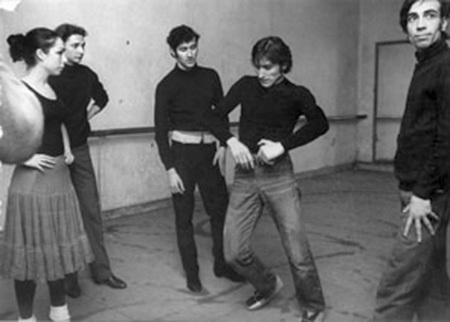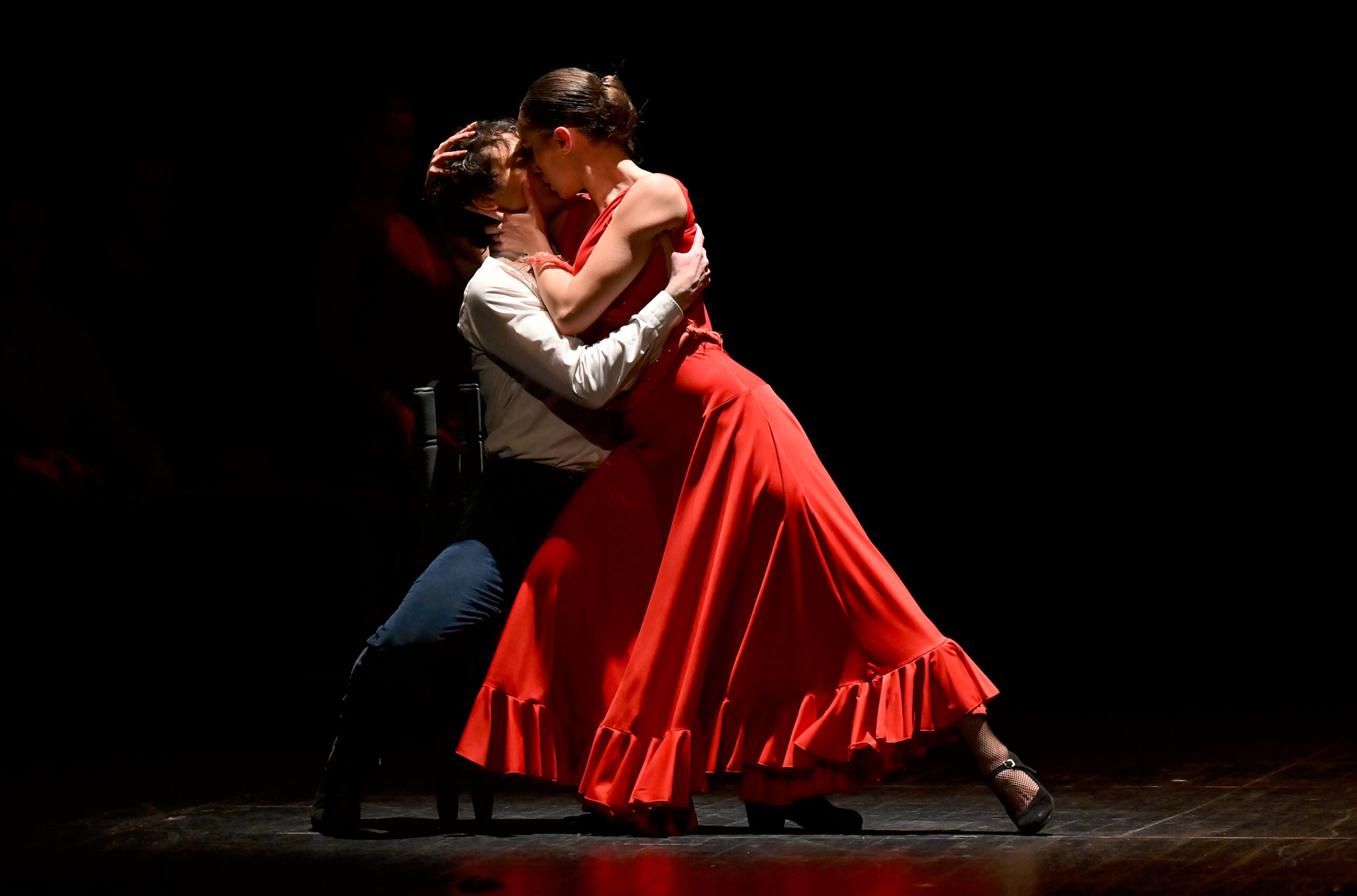
“It isn’t the step that matters, but rather what comes between steps”.
Gades used to say that he became a choreographer because he didn’t have the money to have things produced for him. And so he had no choice but to create his own choreographies himself. He learned choreography from his teachers, drawing from his experiences until he defined his own language, built on sound convictions.
One of his principles as a choreographer was to oppose the concept of the star in dance. “A star is a star because of his or her work, and nothing else. What is the star without the others?” He claimed that the tradition was wrong in keeping the bright spotlight on the star and leaving the rest in the shadows.
For Gades, the focus of the show was the choreography and not the dancer —“because if not they turn into divas”— just like the script is the focus of a play. He distances himself from spectacle, which doesn’t interest him. Another characteristic of his work is the role the audience plays. “The most important thing about the pieces I’ve done has been the collective, the people who are always there, as protagonist or observer”.
As far as the meaning of the dance is concerned, he would sum it up by saying that “dance isn’t the step, but what comes between steps. Making one move after another is nothing more than that, movements, but how and why they come together, what you want them to say, is for us the same as the word for the playwright or actor. I believe in dance stripped bare, pure dance”.
For Antonio, so many excesses had been committed with Spanish dance that he strove for there to be nothing gratuitous or superfluous in his choreographies. He wondered why a choreographer would choreograph a different type of ballet, in the modern style, neoclassical, like the Americans, the Germans or the French. “It’s better to leave that to those who do not have the wealth of people, literature, and folklore that we do. We have to get all that back and drink from that well”.
And so he decided that he would mix the styles and schools of Spanish dance in his choreography, because even ballet is part of Spanish heritage. Convinced that Spanish dance could also have universal expression, his goal as a creator was to create a Spanish ballet that can be danced by any dancer, just like with classical ballet and the so-called contemporary dance.
He said that if there was anything he had contributed, it was to never limit performers, but harness what they do spontaneously at a party, for example, and put it into the dance at just the right time and where their mood makes such a movement justified. This perspective taught him that, for a choreographer, the craft is essential but talent much more so.
Gades always liked to do things right. “That’s why I’m slow”. He was aware of the immense richness of Spanish dances. “I believe that the day a choreographer thoroughly studies our culture he’ll be the best choreographer of his day”. For Antonio, more than just technique, Spanish dance is something alive and spontaneous. The elegance of flamenco, the curtness of the man from the village, that almost ascetic sobriety that characterizes him, is what he intended to reflect through dance. He tried to bring visual beauty, poetry, music, rhythm to dance.
“When I come up with an idea I put it under the microscope until I cleared away any doubts about its legitimacy. I don’t work with music; I work with the dramatic rhythm and the images I see and feel in my head and in my heart first. Using that as a departure point I find the music, then comes the expression of the dance, the choreography. The dance step itself doesn’t mean anything; it’s a language to express a feeling, a person’s mood”.
Gades wept in fear every time he started a new project. His perfectionist streak meant that he became trapped when he got involved with something, he gave it his all and it took its toll. Because for Antonio, creating a ballet wasn’t about filling music with steps and making it look good, but to give it meaning, a reason for being. He chose what was interesting and began putting together the choreography in his mind; then, with the dancers, he established the mood, the logical length and the right music.
He was always thorough in the lighting design, the staging of the choreography, in everything relating to the piece. He left nothing to improvisation. If he thought of a lighting design, he said it was because he had surely seen it once at the Prado. And if he had an idea, that idea is undoubtedly inspired by an ideology.
“I can’t do two things in a row. Every time I create something it leaves me completely drained, and I need to fill my head again. I’m not able to do three ballets every year, I have a hard time creating new pieces. I need to recharge every once in a while, to have new experiences, to hear other music”.
Gades never changed a thing once the ballet was created, premiered, taken on tour and filmed, not the choreography, the lights or the costume design.
Antonio felt that he had brought a new form of theatrical expression to Spanish dance, one that opened the possibilities of evolution towards a universal art. We have managed to put this art into a theatrical concept. It has evolved.



